|
Veteran Member
Join Date: Oct 2004
Location: Leiden, the Netherlands
|
Higher resolution versions of the movies curiousuburb mentions in his posting can be found on the ESA site. Unfortunately they are in WMV...
http://esamultimedia.esa.int/multime...on_25Apr06.wmv http://esamultimedia.esa.int/multime...ie_25Apr06.wmv |
| quote |
|
Antimatter Man
Join Date: May 2004
Location: that interweb thing
|
Sweet updates today...
Titan, rings, and tiny Epimetheus all in one frame  Quote:
 And a view only available from the 'dark side'... Quote:
|
||
| quote |
|
Selfish Heathen
Join Date: May 2004
Location: Zone of Pain
|
Beautiful.
Keep 'em coming, 'burb.  |
| quote |
|
Antimatter Man
Join Date: May 2004
Location: that interweb thing
|
|
| quote |
|
Antimatter Man
Join Date: May 2004
Location: that interweb thing
|
Update:
Janus and Prometheus from below the Ring plane.  Quote:
|
|
| quote |
|
Antimatter Man
Join Date: May 2004
Location: that interweb thing
|
Moons and Rings update:
Rhea occults Enceladus... (check out the Rhea-shine on Enceladus)  Quote:
The Dark Side of Saturn (with Enceladus)  Quote:
If you look closely at the larger image (below), you can see the Fountains of Enceladus emitting particles from the south pole! 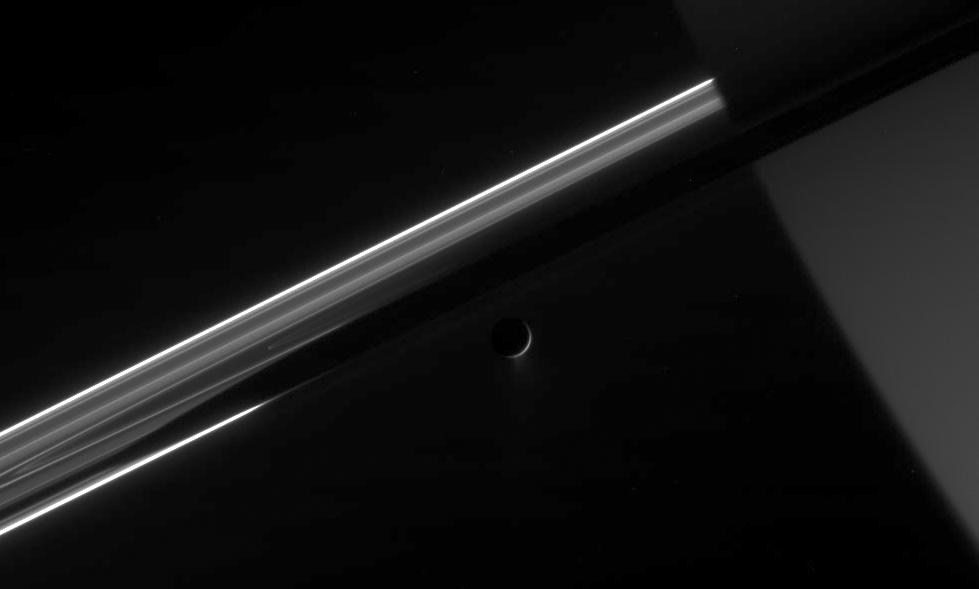 ---- And Mimas peeking out from behind the Rings  Quote:
All those who believe in telekinesis, raise my hand. |
|||
| quote |
|
Antimatter Man
Join Date: May 2004
Location: that interweb thing
|
Titan gets the Rings occluding treatment
 Quote:
All those who believe in telekinesis, raise my hand. |
|
| quote |
|
Antimatter Man
Join Date: May 2004
Location: that interweb thing
|
Enceladus shows its tail again
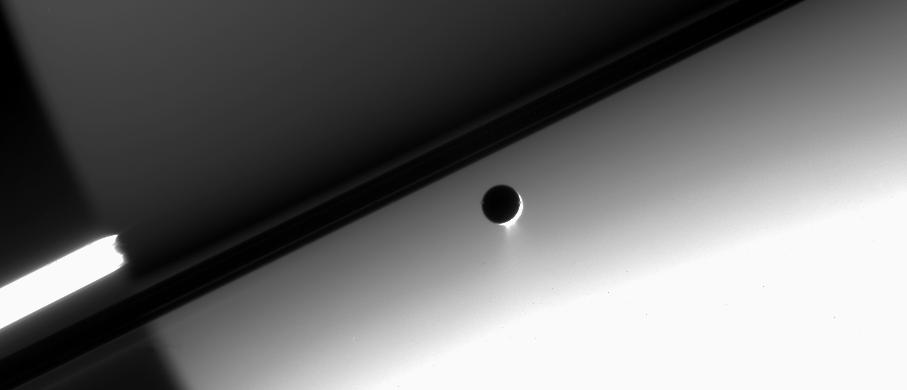 Quote:
|
|
| quote |
|
Antimatter Man
Join Date: May 2004
Location: that interweb thing
|
NASA has posted an enhanced version of the Enceladus plume image
 Quote:
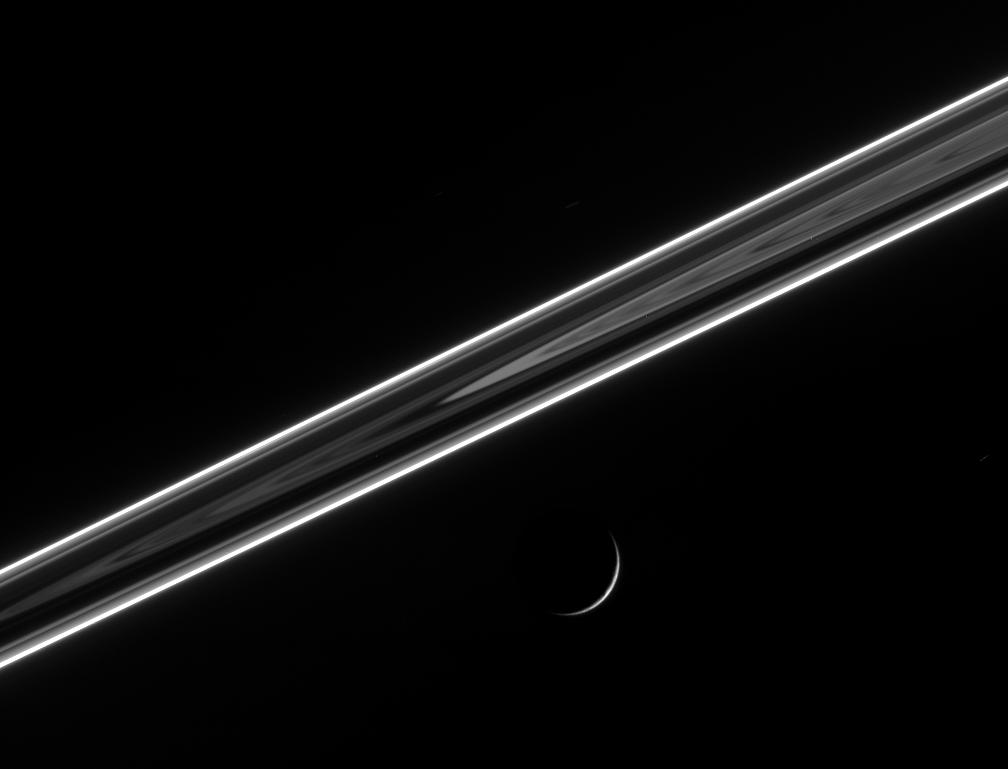 Quote:
All those who believe in telekinesis, raise my hand. |
||
| quote |
|
Antimatter Man
Join Date: May 2004
Location: that interweb thing
|
Rhea and Dione do the moonshine/occultation thing
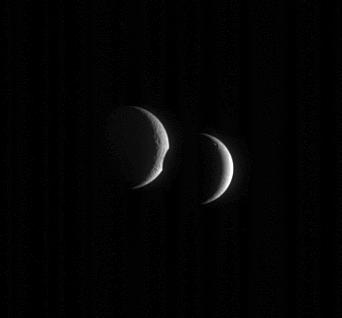 Quote:
|
|
| quote |
|
Selfish Heathen
Join Date: May 2004
Location: Zone of Pain
|
Beautiful.
Again, thanks for keeping us updated.  |
| quote |
|
Antimatter Man
Join Date: May 2004
Location: that interweb thing
|
Moon movies from Cassini!
In addition to the usual impressive image updates, the Cassini-Huygens project gnomes have released a bunch of new movie clips. Some are .GIF, some are .MOV, and some are .MPEG format files, each compiled from camera images of various moons interacting with each other, or the Rings, or Saturn itself. In some cases, you can see some of the rotation, in others the spacecraft motion or orbital mechanics seem to make this more difficult. Click images for alternate movie formats or source pages. Silent Spheres  Quote:
 Quote:
 Quote:
 Quote:
 Quote:
 Quote:
Enceladus and Titan  Quote:
All those who believe in telekinesis, raise my hand. |
|||||||
| quote |
|
Antimatter Man
Join Date: May 2004
Location: that interweb thing
|
Glorious new image of Titan, the Rings, and Janus.
Nice atmospheric detail on Titan.  Quote:
All those who believe in telekinesis, raise my hand. |
|
| quote |
|
Veteran Member
Join Date: Oct 2004
Location: Leiden, the Netherlands
|
It's actually a podcast about everything JPL. So it has episodes on many different (interplanetary) mission. Interesting stuff.
|
| quote |
|
Antimatter Man
Join Date: May 2004
Location: that interweb thing
|
Enceladus plumes, and Rings, and Moons... beautiful new images from Saturn
 Quote:
 Quote:
 Quote:
All those who believe in telekinesis, raise my hand. |
|||
| quote |
|
Veteran Member
Join Date: Jun 2005
Location: State of Flux
|
Interesting and beautiful shots. Thanks for the effort, curiousuburb.
 |
| quote |
|
Antimatter Man
Join Date: May 2004
Location: that interweb thing
|
Shine on you crazy spheres.
 Quote:
 Quote:
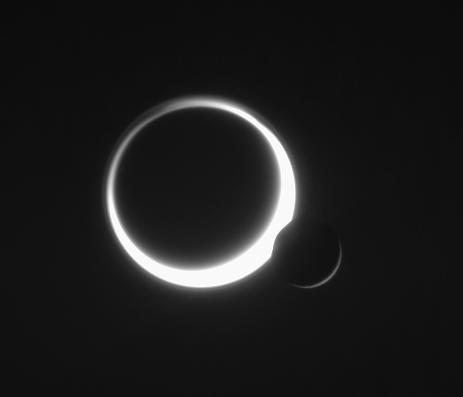 Quote:
All those who believe in telekinesis, raise my hand. |
|||
| quote |
|
Antimatter Man
Join Date: May 2004
Location: that interweb thing
|
Moons and Rings update:
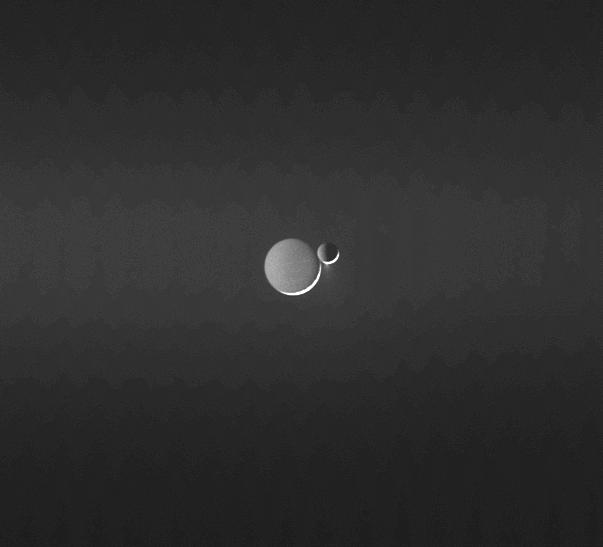 Quote:
 Quote:
 Quote:
 Quote:
 Quote:
All those who believe in telekinesis, raise my hand. Last edited by curiousuburb : 2006-07-23 at 07:21. |
||||||
| quote |
|
Veteran Member
Join Date: Oct 2004
Location: Leiden, the Netherlands
|
Strong evidence for lakes on Titan
From NASA Quote:
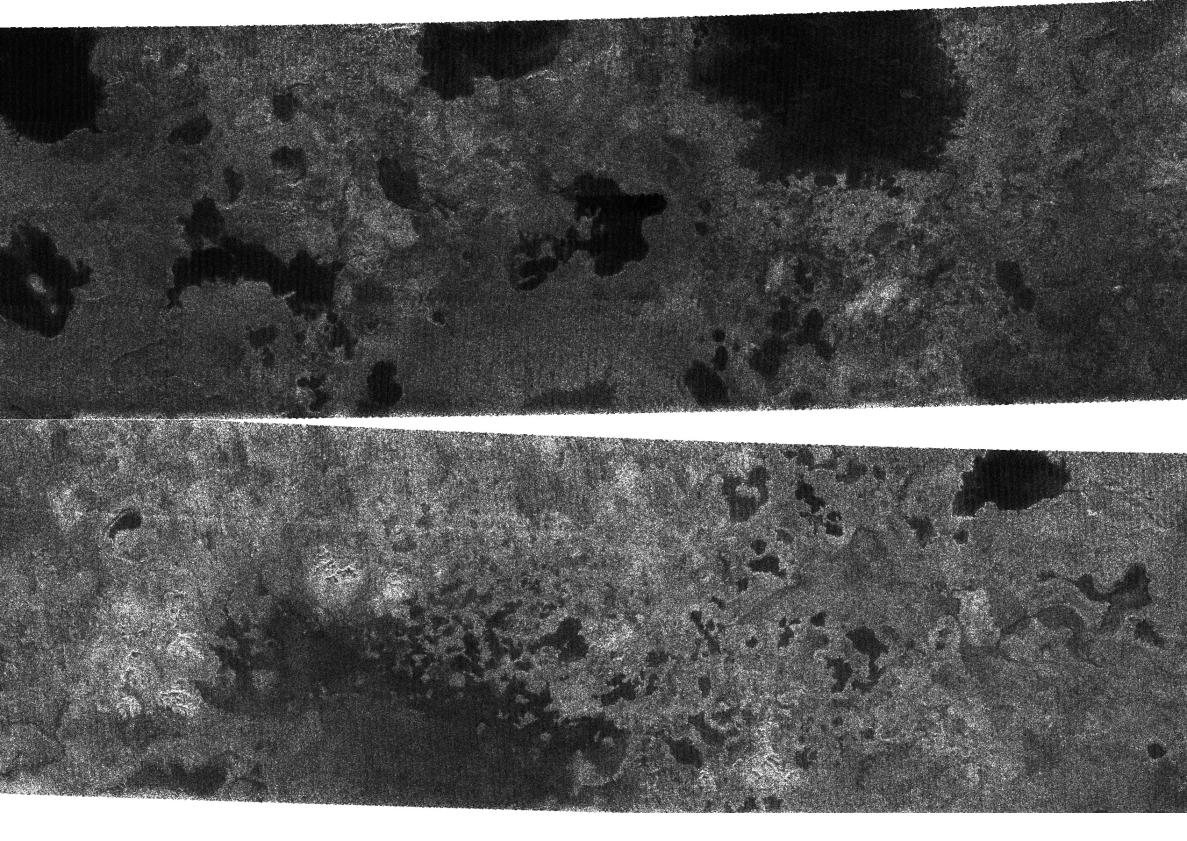 This is something quite revolutionary. They would be the first bodies of liquid found on the surface of a planet other than dear mother Earth. |
|
| quote |
|
Antimatter Man
Join Date: May 2004
Location: that interweb thing
|
Rings and Moons update:
Rings and Rhea 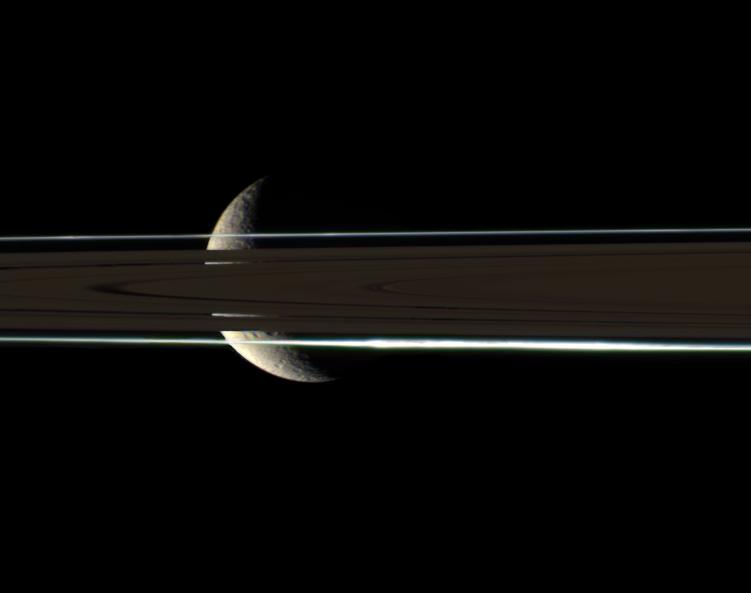 Quote:
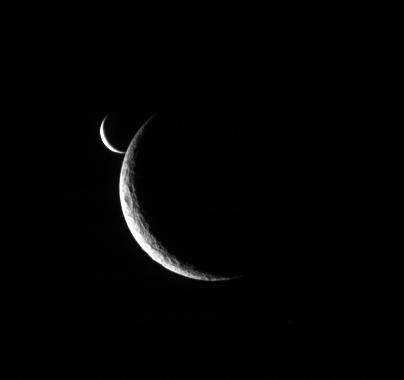 Quote:
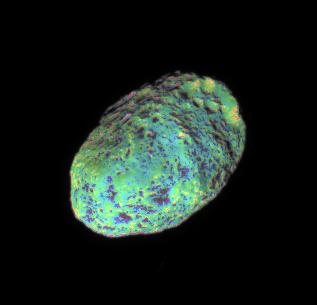 Quote:
 Quote:
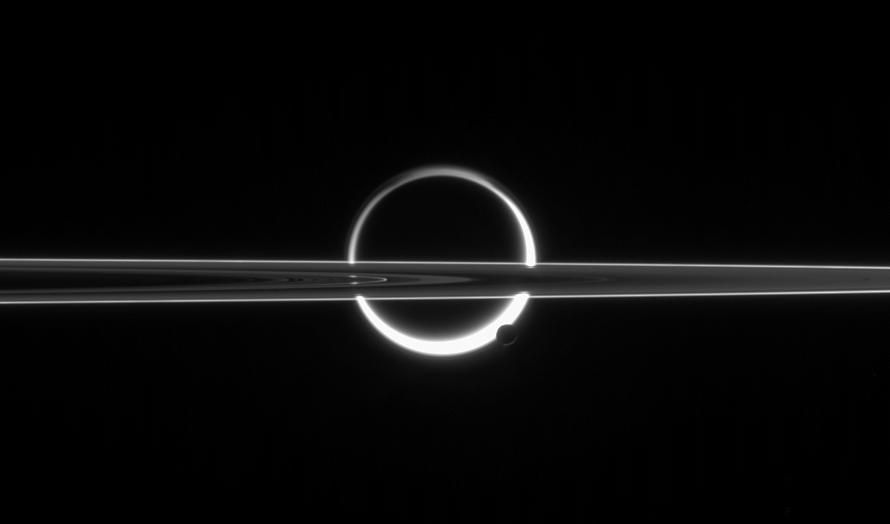 Quote:
 Quote:
All those who believe in telekinesis, raise my hand. |
||||||
| quote |
|
Member
Join Date: Feb 2005
Location: Paris, France
|
Excellent thread. Great work and hats off, curiusuburb !
|
| quote |
|
Antimatter Man
Join Date: May 2004
Location: that interweb thing
|
 Quote:
click images for links Quote:
|
||
| quote |
|
Hates the Infotainment
Join Date: May 2004
Location: NSA Archives
|
|
| quote |
|
Hates the Infotainment
Join Date: May 2004
Location: NSA Archives
|
Because this thread rules, that's why....
|
| quote |
|
Veteran Member
Join Date: Oct 2004
Location: Leiden, the Netherlands
|
Thanks for reminding me
 |
| quote |
|
feeling my oats
|
ok, saturn is frankly freaking me out lately...
first the eye, now we have either the galaxies largest gods-eye or a big red stop sign showing up on the opposite pole http://www.nasa.gov/mission_pages/ca...-20070327.html g  crazy is not a rare human condition everything is food if you chew hard enough |
| quote |
|
Antimatter Man
Join Date: May 2004
Location: that interweb thing
|
Holy HexaHurricanes, Batman !
Beaten to the update. Been too busy, but spotted this myself today.  |
| quote |
|
Veteran Member
Join Date: Feb 2006
Location: Arizona
|
weirdddd :/
|
| quote |
|
Space Pirate
Join Date: May 2004
Location: Atlanta
|
Not to throw a damper on the Alien Olympics, but what are the chances this is a phenomenon associated with Cassini's imaging system?
Quote:
|
|
| quote |
|
Veteran Member
Join Date: May 2004
|
Naw. It's a REALLY HUGE example of a steadystate polygonal vortex.
http://www.physorg.com/news66924222.html |
| quote |
| Posting Rules | Navigation |
|
Page 6 of 8 First Previous 2 3 4 5 [6] 7 8 Next |
| Thread Tools | |
«
Previous Thread
|
Next Thread
»
All times are GMT -5. The time now is 10:55.


 + Play QuickTime Movie (6.7 MB)
+ Play QuickTime Movie (6.7 MB)








